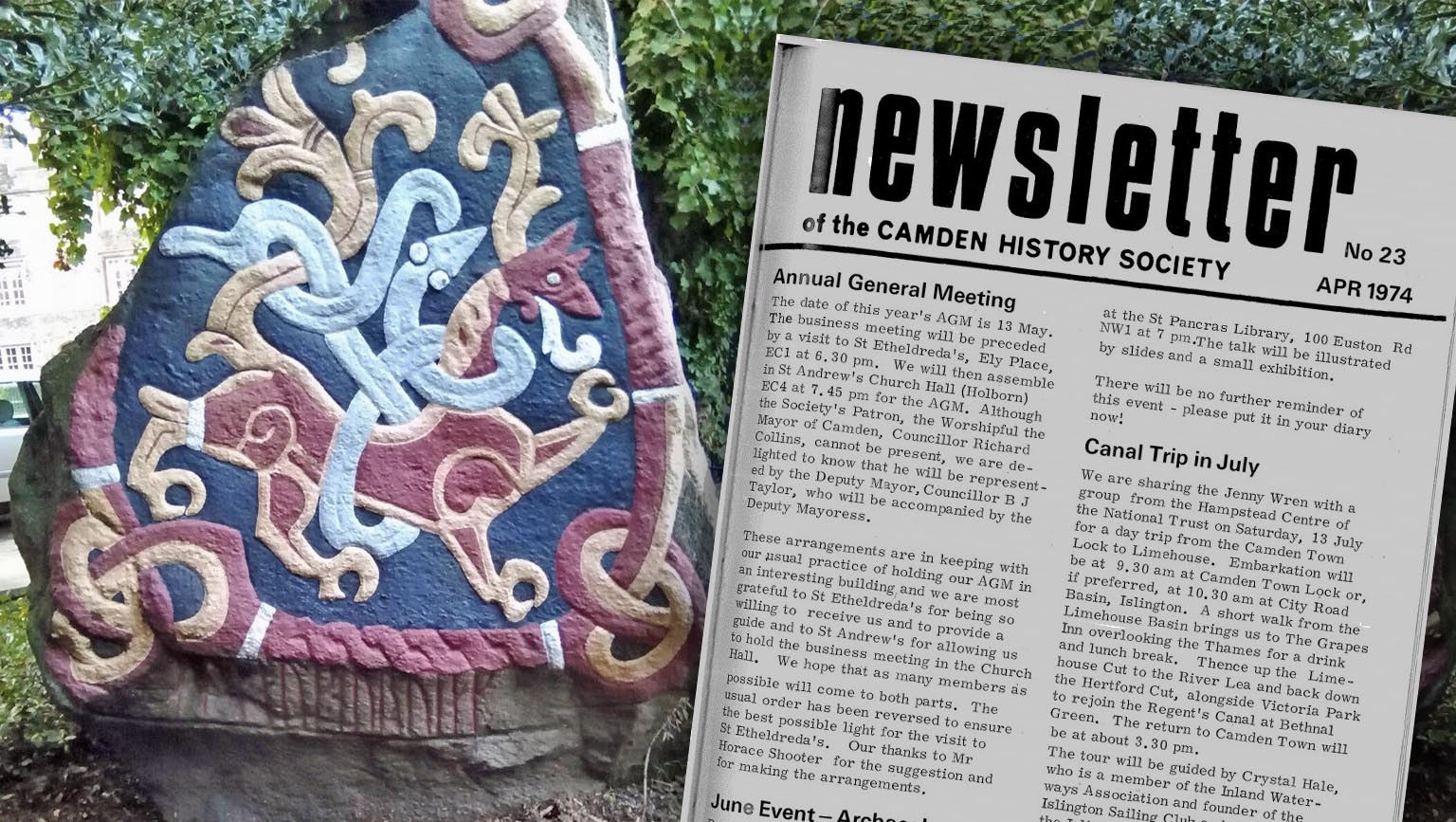
The ‘navvies’ of Chalk Farm: fist fights, rowdy pubs and raffling a dead body
Life was dangerous, drunken and relentlessly tough for the men who transformed the neighbourhood carving out the railways

If you fancy embarking on a Nordic history adventure in the middle of NW1
The April 1974 edition of Camden History Society’s newsletter contained a short article entitled ‘A Bit of Denmark in Camden’. It revealed a curious oddity awaiting discovery by the more intrepid of Regent’s Park walkers who venture across the Inner Circle. Look out for the imposing twin spires of the 200-year-old neo-gothic Danish Church, and you’re on the right track.
Many people know that St Katherine’s Church in Regent’s Park near Gloucester Gate is now the home of the Danish Church in London; but not everyone, perhaps, realises that on the south side of the church is quite an amazing site, a copy of one of Denmark’s finest ancient monuments.
This is the famous Jelling Stone which Harald Bluetooth (King of Denmark, AD 940 to 985) set up at the ancient sacred site of Jelling in eastern Denmark. It is well worth a detour if you are walking nearby in the Park.
The Jelling Stone is an irregularly-shaped boulder, about eight feet high by as many wide. On one face is carved the earliest Scandinavian representation of Christ – arms outstretched, the whole body twined with ribbons in the typical late Viking style of decoration.
On the second side is a great beast caught up in a vine, a beast surely ancestral to a fine monument of our own, the carved tombstone from about the time of Canute found in St Paul’s Cathedral in 1852 and now to be seen in the Guildhall Museum.
The third, largest side of the Jelling Stone carried an inscription in runes: King Harald had this memorial made for Gorm his father and Thyri his mother; that Harald who won for himself all Denmark” but the inscription carries on at the bottom of the two sides: “and Norway, and made the Danes Christian.” So it is a very appropriate monument for the Danish Church here, even though its splendours may look rather barbaric to modern eyes.
As a sequel to his conversation, Harald built a small wooden church at Jelling, traces of which were found by excavation in 1948: in this way he Christianised a site that had apparently had a long tradition as a pagan sacred centre. In 983 the Danes expelled the Germans from the south of their country, but Harald lived only another couple of years, with declining powers and finally in flight from his own son.
The cast of the stone was placed in the garden of the Danish Church in 1955; the design has been picked out in rather bright colours, though I have not so far been able to discover whether there is evidence for these on the original monument, all the photographs of which are plain. One thought lurks – will the archaeologists of the far-off future be baffled by this monument being “in the wrong place”?
This is an extract from the newsletter of the Camden History Society, first published in April 1974. To find out more about the work of the society, its fascinating publications detailing the streets and neighbourhoods of the borough, and becoming a member, visit

Life was dangerous, drunken and relentlessly tough for the men who transformed the neighbourhood carving out the railways

The King’s Cross educational charity just keeps on growing

As a new range of tees and merch celebrates the iconic label